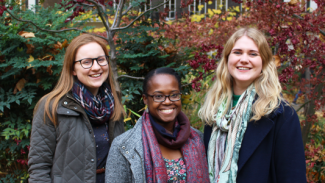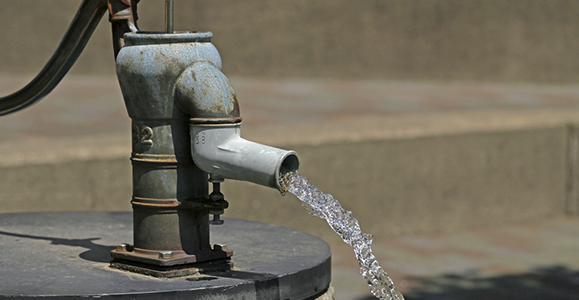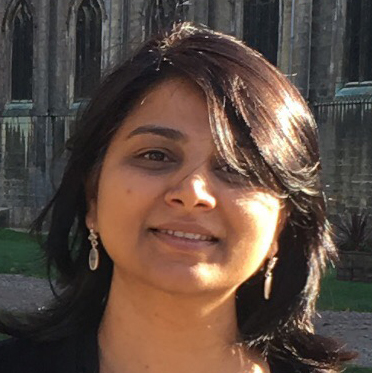Two pots on her head and one on her daughter’s, mentally rationing the three pots of water between the five people at home, she walked that familiar dusty road for the past sixteen years. The daughter had lately been asking to join a few other children going to school, but that wasn’t the most pressing worry in her head. After all, what could stories in school textbooks teach to a thirsty girl of a poor family? Her younger son was ailing with diarrhoea and the doctor said he needs to drink a lot of water. How will she manage in three pots? Maybe today was one of those days when she might have to tread the three miles again to fetch more water. A hurting back and three miles to walk…this woman lived in Libya. Oh wait, change her dress, this woman also lives in India and Pakistan and Yemen and Chile and Peru and Mexico and Uzbekistan…
Almost one billion people across the globe do not have access to water and 2.1 billion people do not have access to clean drinking water. And yet, many among the privileged who get water in their home taps have been living in a state of denial where water is available in plenty. While the total amount of water on the planet remains the same, the number of people claiming it is increasing with the rise in population. Improvement in lifestyle has further increased the demand for water, especially in developed urban areas. Cape Town, the first city to run out of water, has shocked the world out of the myth that water crisis only happens in dry and arid rural areas. Cities across the globe are now revisiting their water plans and estimating demand growths. Managing demand and switching to a water-wise lifestyle has emerged as an important focus area.
July 2010 marked a milestone in the history of the human race, when the UN General Assembly recognised the ‘Right to water and sanitation for every human being’ as a Sustainable Development Goal (SDG 6). According to SDG 6, all human beings should have access to sufficient and safe water (50-100 litres per person per day) within 1 kilometre of their household, at an affordable cost, and not exceed 3% of the family income. Ever since, much is being done to improve water and sanitation for people across the globe, but the needs are far greater.
Water worries have different connotations for people living in different geographies. In developing countries, availability of adequate clean drinking water is a major issue while in developed countries, rising water bills and affordability of water comprise the majority of water woes. Among agricultural communities, inadequate water for agriculture is the biggest worry, while in industrial areas the lack of enough water for power generation is a major risk to business continuity. However, irrespective of the geography and related water issues, it is essential that projects tackling the issue adopt holistic and sustainable solutions in order to achieve SDG 6.
Agriculture accounts for 70% of the water withdrawal across the globe. In most developing countries, a large fraction of farmers still rely on flood irrigation which consumes almost eight times more water than smart farming practices. Large-scale adoption of smart irrigation such as drip irrigation and precision farming would not only improve farm yield, food security and rural livelihood, but also free up a whole lot of clean water, making it available to deprived people.
To cater clean drinking water to groundwater dependent communities, many projects have started relying on reverse osmosis (RO) based systems. While the water is adequately clean, the technology is wasteful as 40 litres of water is wasted for every 100 litres of water filtered. RO-based systems have come up as a temporary solution to the drinking water crisis, however, excessive water withdrawal by these systems leading to groundwater depletion has made the sustainability of these projects questionable. There is a worldwide need to adopt more eco-friendly approaches like natural sand-based filtration processes or ion exchange to ensure clean sustainable water distribution.
In urban areas, the usual practice has traditionally been to address water demand by extracting water from nearby water sources or groundwater. Excessive demand and summers months often lead to supply crisis for utilities. However, our traditional practices have ignored two important sources which could increase the water availability in the system:
Reducing inefficient water use
Leakages in water supply systems range up to 50% in some parts of the world. Leakage values have been as high as 23% in the city of London to 46% in the city of Bangalore. Billions of litres of precious treated water is lost due to inefficient supply systems. If much of this water is saved by improving water supply infrastructure, it could be used in managing the demand, thereby requiring less extraction from the water resource. This could free up a lot of water in the system, making water available to other water-scarce areas. While some places like Vietnam have taken an exemplary lead in curbing water losses, many more cities need to follow suit. Adequate policy framework and suitable technology suits working in tandem could go a long way in ensuring sustainability for the water supply.
Recycling wastewater
Seventy percent of the world’s wastewater is discharged into water sources without any treatment. Discharge of untreated wastewater has been leading to not only pollution of clean water bodies, but also wastage of precious usable water that could be recovered by treating wastewater. Complete recycling of wastewater could actually supply as much as 50% of water demand of many places. Cities like Singapore have set examples of maximising water reuse by creating even drinkable ‘new-water’ by treating wastewater.
While a multitude of projects and efforts are now being implemented to achieve the SDGs, there is a serious need to ensure robust policy frameworks for supporting the sustainable usage of water through the Integrated Water Resource Management approach. Much is being done to improve supply side interventions, however, a serious effort is required to implement water demand side management. Strong political and social will to improve the water situation is the need of the hour. The fact that a large population still needs access to adequate and clean water within our limited resources calls for optimising our water usage in ways where every drop of water is accounted for.





